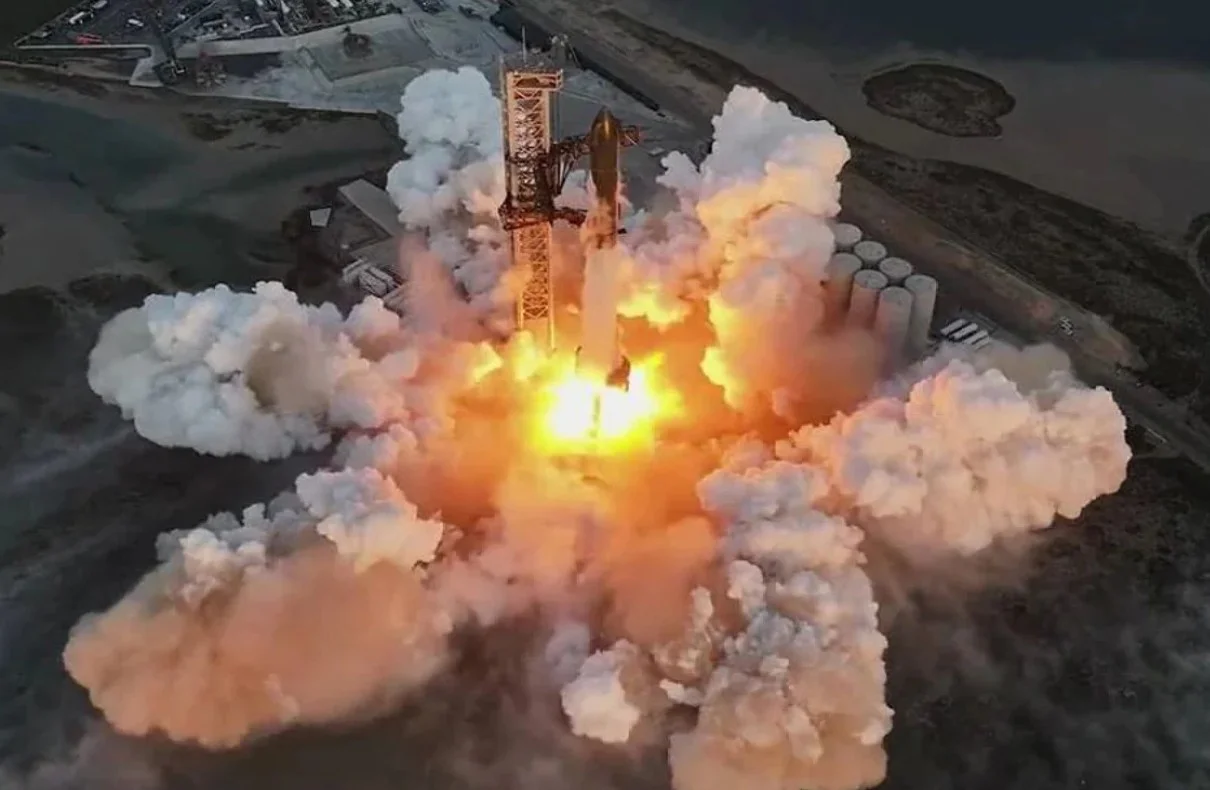SpaceX launched its largest and most potent rocket, Starship, on an unmanned test flight from Boca Chica, Texas (USA), on November 18, 2018. However, shortly after takeoff, the reusable spacecraft—designed to carry people to the Moon and Mars in the future—was completely destroyed by two enormous explosions.
The ionosphere, the topmost layer of the Earth’s atmosphere and a barrier that protects life on Earth, has the greatest hole ever formed in addition to damaging the rocket. According to a team of researchers’ findings published in the journal Geophysical Research Letters, the hole lasted approximately one hour and stretched thousands of kilometers.
The size of the disturbance surprised the research team, according to co-author Yuri Yasyukevich, an atmospheric physicist at the Institute of Solar-Terrestrial Physics in Irkutsk, Russia, who spoke with Nature. He believed that these kinds of accidents could have an effect on future driverless cars that might need precise satellite navigation.
During launch, Starship’s first stage—which was supposed to safely return to the surface for reuse—exploded shortly after separating from the upper stage, some 90 kilometers (56 miles) above the Gulf of Mexico. A few minutes later, at a height of around 150 kilometers (93 miles), the self-destruct mechanism of the upper stage exploded.
The sun’s radiation affects the ionosphere, a region of the atmosphere that stretches from 50 to 1,000 kilometers above sea level. This radiation causes certain air molecules to lose their electrons. The ionization level may be monitored in real time by the researchers, providing insight into the effects of various events on the ionosphere, such as nuclear testing below and earthquakes. The scientists did this by looking at data from over 2,500 ground stations that receive satellite navigation signals in North America and the Caribbean.
They discovered that the shock waves produced by Starship’s explosions traveled faster than sound, causing the ionosphere to shift into a “hole”—a zone of neutral atmosphere—that stretched for approximately an hour from the Yucatan Peninsula of Mexico to the southeastern states of the United States.
Rocket exhaust can trigger chemical reactions that create temporary holes in the ionosphere even in the absence of an explosion, Yaskevich said, but the impact of the shock waves in this case was enormous. The hole was even larger than the one created by the historic meteorite that fell near Chelyabinsk, Russia, in 2013, the largest in a century.
According to Nature, ionospheric disturbances can affect not only satellite navigation, but also communications and radio astronomy. As launch frequencies increase, these effects could become a bigger problem.

